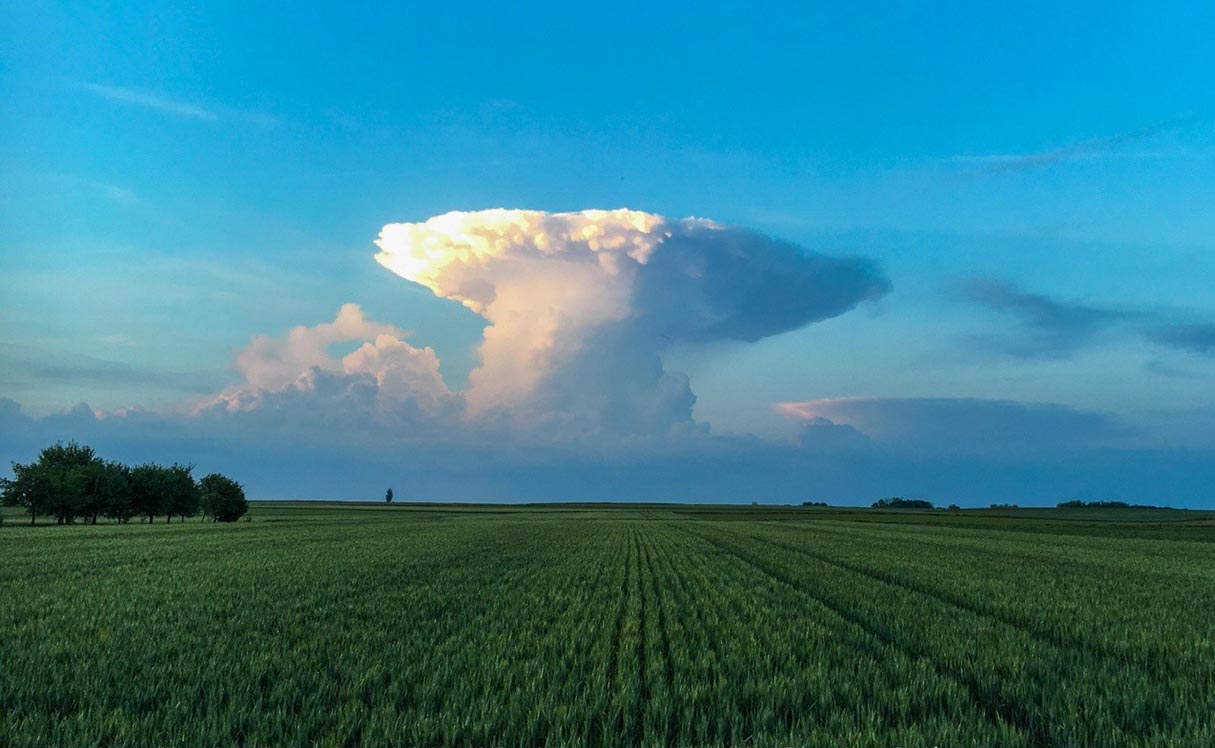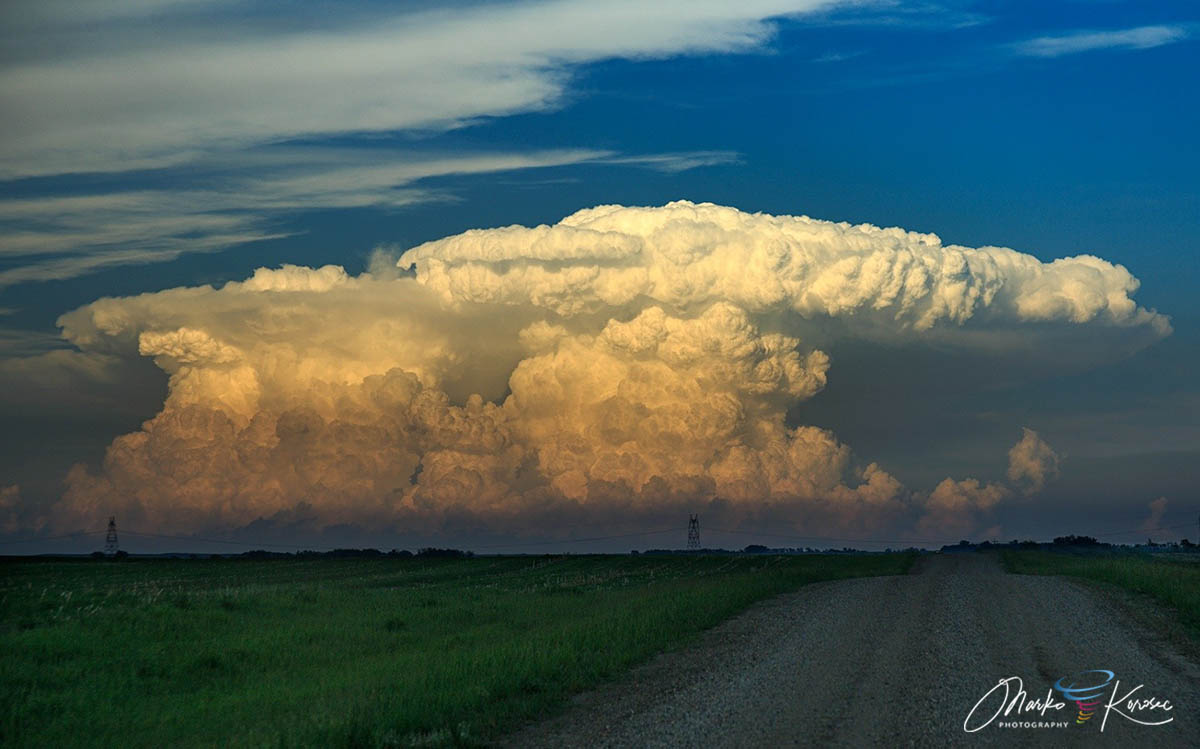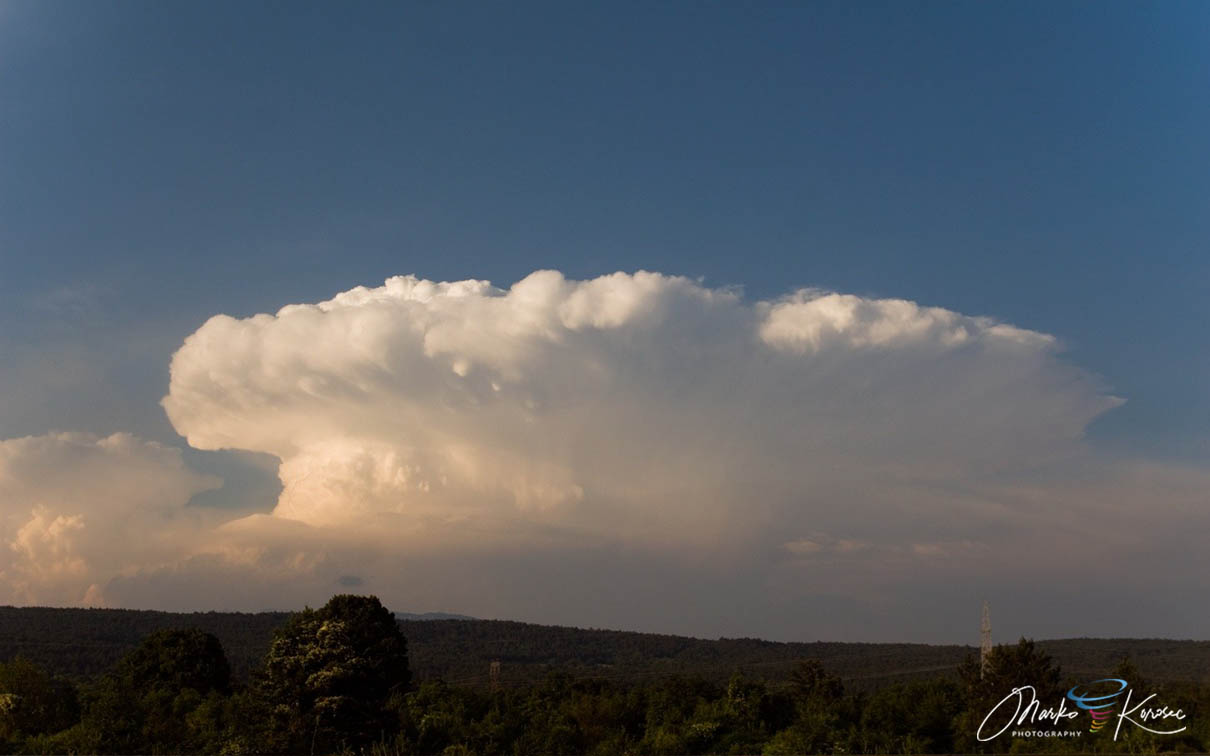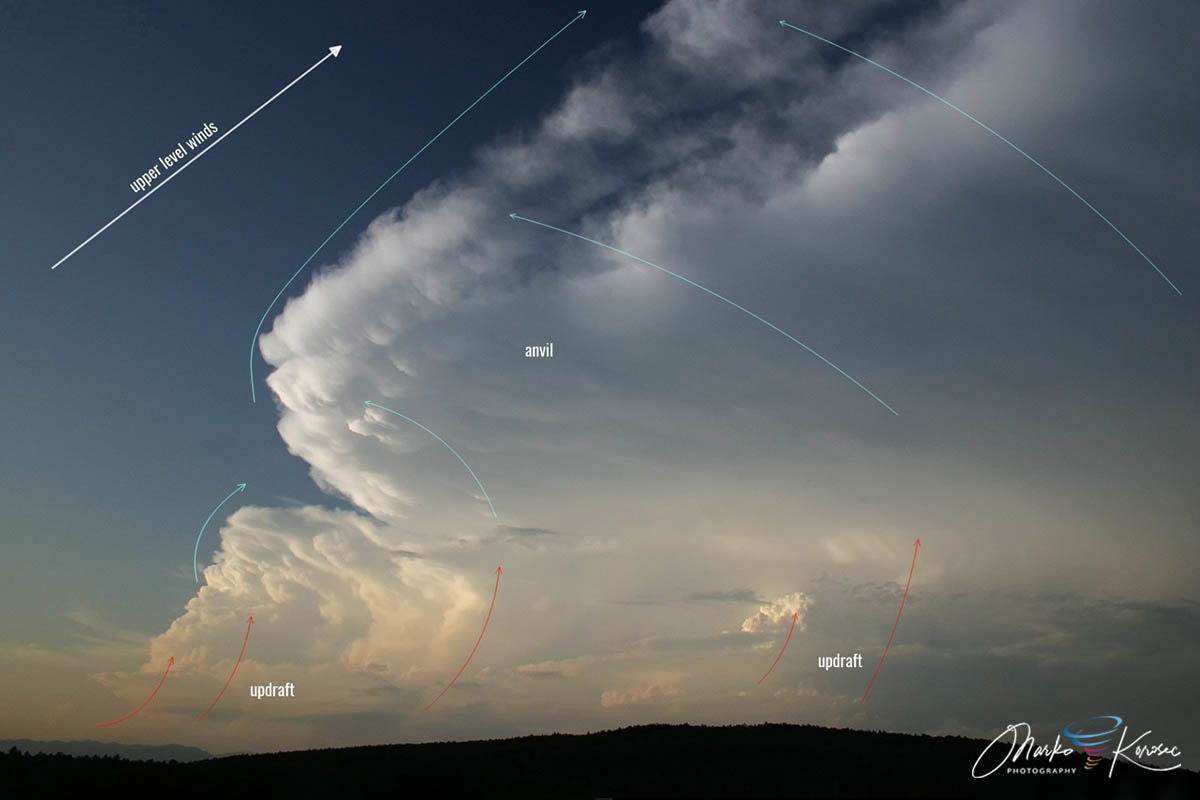A back-sheared anvil is the expression for a cumulonimbus anvil that spreads against (upwind) into relatively strong winds (jet stream) aloft.
Anvil vs. wind
As the anvil forms, it is influenced by upper-level winds. Typically, winds increase as you go higher in the troposphere. Under stable conditions with high pressure, winds in the upper part of the troposphere can be very weak, below 10 km/h.

However, under more unstable conditions, wind speeds can exceed 200-250 km/h when a jetstream may be present aloft. The strength of upper-level winds strongly influences the form of the anvil. We take a look at how.
Little or no wind shear and upper-level winds
In an unstable environment with little or no wind shear, the updraft will move vertically and spread evenly (radially) as it hits the equilibrium level.

Cumulonimbus capillatus incus over the plains of eastern Croatia. Virtually no wind shear: the updraft is vertical, with no tilt. The anvil is spreading virtually evenly in all directions. Note another anvil in the distance to the lower right. Photo: Anton Papic
Strong wind shear and upper-level winds
When wind shear is present, the updraft becomes tilted, and the anvil becomes offset / pushed downwind in the direction of upper-level winds. The stronger the wind shear and upper-level winds, the more the updraft is tilted and the more the anvil is sheared.
The shape of the anvil in a sheared environment will strongly depend on the balance between upper-level winds and updraft strength. The stronger the updraft, the more it can ‘resist’ upper-level winds. The stronger the upper-level winds, the more they elongate the anvil. Let us see a couple of examples to illustrate this effect.
Anvil shape (and updraft tilt) in strong wind shear, strong upper-level winds when the updraft is very strong. Strong wind shear tilts the updraft and elongates the anvil downwind. However, as the updraft is very strong and the upward momentum transfers into lateral (horizontal) momentum when the updraft hits the tropopause, there is enough momentum for the anvil to spread some distance upwind.

The stronger the updraft, the further upwind it can extend (in the same upper-level wind). Typically, the leading edge of such an anvil will be sharp and thick. This is called a back-sheared anvil, often indicative of a strong updraft and a severe thunderstorm.
When the updraft is strong compared to the wind shear and upper-level winds (e.g., strong updraft in moderate wind shear and upper-level winds or very strong updraft in strong wind shear and upper-level winds), the back-sheared anvil extends some distance upwind.
The extent depends on how strong the updraft is compared to upper-level winds; the stronger the updraft, the larger the forward extent. In strong wind shear and upper-level winds, the updraft must be very strong: in such cases, a thick forward edge of the anvil forms.

When wind shear and upper-level winds are very strong, the anvil elongates. There is not enough forward momentum for a strong leading edge to build (i.e., a back-sheared anvil), and the anvil extends only downwind.

- In environments with little or no wind shear, the anvil spreads evenly in all directions. As seen from above (satellite), the anvil will be generally symmetric circular.
- The anvil will be elongated in environments with moderate shear into a more elliptical (oval) shape.
- The anvil will have a U- or V-shape, elongated far downwind in environments with strong to very strong shear.
- The forward extent of a back-sheared anvil depends on the strength of the updraft relative to upper-level winds: the stronger the updraft, the larger the forward extent.

SEE ALSO: